Common Spanish Verbs & Words You Need to Know
Inside: Common Spanish verbs every Spanish learner needs to know, and a guide for parents teaching Spanish.
The Spanish language has a lot of words. It’s impossible to calculate exactly how many, but the Diccionario de la Real Academia Española (DRAE) contains about 93,000. Don’t worry, though! There’s good news for Spanish learners: only a tiny percentage of those words make their way into daily conversation.
I’m going to give a brief intro explaining why high-frequency is a better way of thinking than by “difficulty” or only themed lists, and then share my graphics for those most common Spanish verbs. At the end you can also get these posters as a free download!
This post contains affiliate links. Thank you for your support!
Today’s post is for any Spanish language learner, but I’m specfically writing to parents. Many parents tell me they want to learn Spanish with their kids (maybe they’re using my free Spanish for kids starter kit), but they’ve forgotten their high school Spanish or never studied it. If that’s you, this post was written with you in mind!
The secret to effective, communicative language lessons is focusing on high-frequency structures. One problem with mainstream textbooks and programs is that they teach by themes, and introduce by “difficulty.” This means you could go half a year in Spanish before learning how to express I have or I like. Many of you probably took classes like this. You might have “learned” the word scarf before you could express liking or having something.
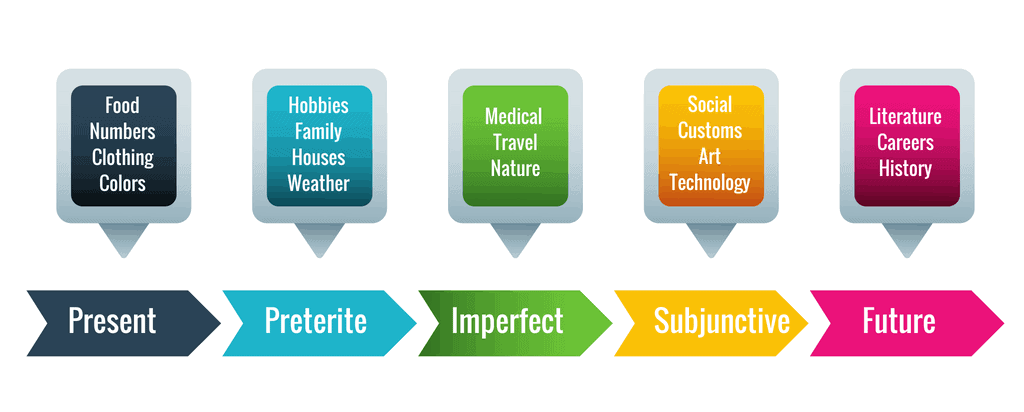
Themes aren’t all bad. The problem is when you try to learn every word in a theme–like stepsister and great-grandfather— even if they are sort of obscure. You’ll probably just forget them!
Here’s the solution: zero in on the core of the language: common Spanish verbs and phrases. Learn just mom, dad, sister, brother, as a beginner. You’ll pick up more specific, less frequent terms later.
And — when you learn high-frequency phrases– you’ll more quickly have access to authentic Spanish books, songs, and materials. Why? Because they’re more likely to show up, of course!
So instead of thinking in terms moving through a sequence of “difficulty” and boxed “themes,” think in terms of frequency: starting at the core, and slowing expanding outward to absorb less-common words. Begin with the words you need to be understood, as a beginner, and eventually you’ll be expressing yourself more precisely.
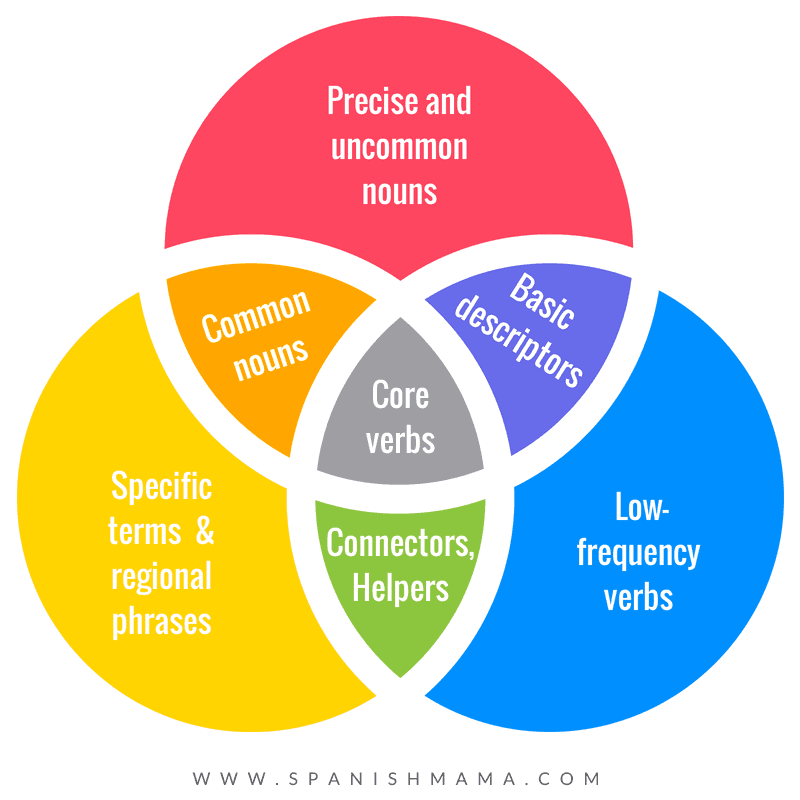
If you are trying to self-educate a bit, here are some helpful links. None are as ideal and having a teacher, but you can use these resources at home, for free.
Teach Yourself Spanish, with Free Online Resources
Make a playlist of Songs that use High-Frequency Phrases
Order learner books like these examples (novels that use high-frequency words– made for teens, but fun reads!):
Now, let’s get started with our high-frequency lists!
COMMON SPANISH VERBS
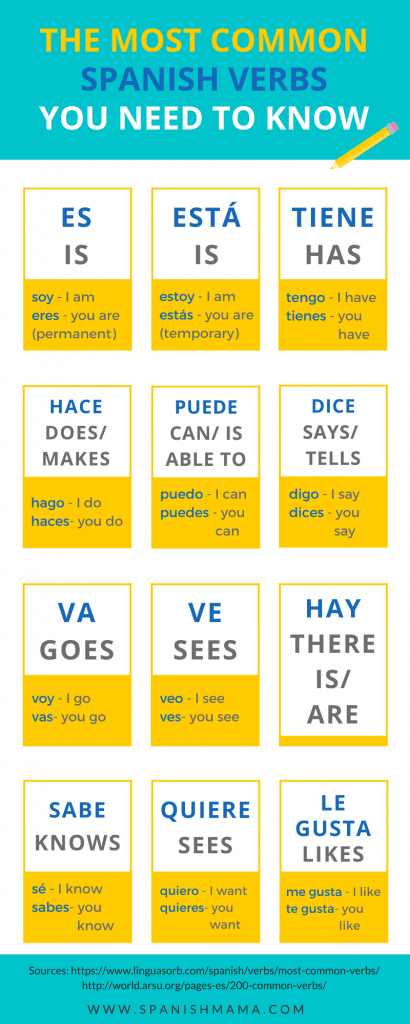
Spanish verbs are very complicated, especially if you set out to memorize all the endings and mathematical-like rules. You might be able to get them into your short-term memory that way, but here we are focusing on daily communication.
Instead, focus on what you want to say. “Ser” (to be) is a messy verb. As you start out though, all you *really* need to know is how to express core phrases like is, I am, you are, etc. It’s how 2-year-olds begin, and reach fluency without knowing how to conjugate!
Here I’ve gathered 11 high-frequency verbs in Spanish, plus gustar (it’s essential when teaching kids.) I only included the he/she/it forms, along with I and you underneath. Eventually, you’ll acquire the forms for we, they, and you all, but these are the basics. When you are ready, the past tense forms are included as well.
I made a Quizlet sets so you can access the pronunciation on each word:
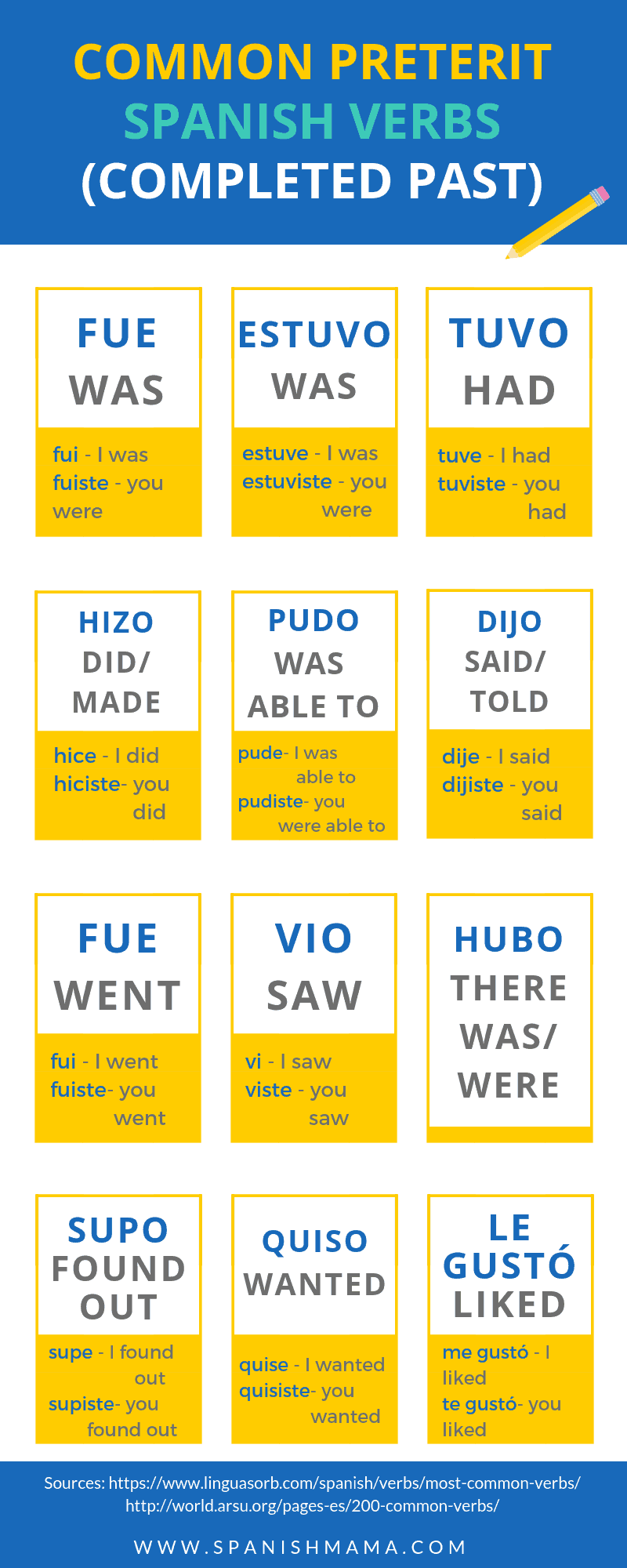
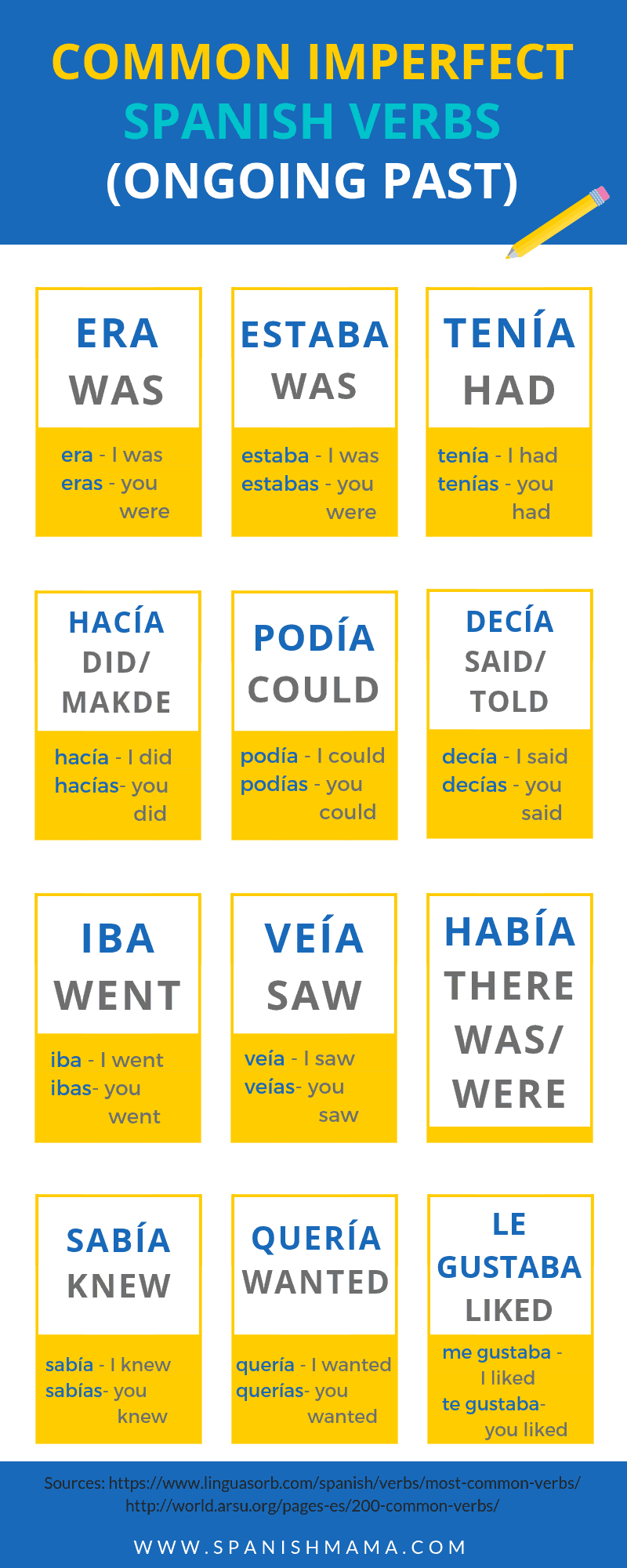
COMMON SPANISH WORDS
Here are some of the top Spanish words you’ll need to know as you get started. Especially with words like these, memorizing them out of context is probably the slowest path to acquiring them. They are most memorable when read and heard in context.
But if you’re trying to work Spanish into your daily life, you’ll need to use these! First, you can see a list of core questions phrases. If you are teaching and reading books in Spanish with your kids, it’s very helpful to know how ask. Work them into daily life as you point out things during the day.
For pronunciation help and clarification of use, here’s are Quizlet sets I’ve made:
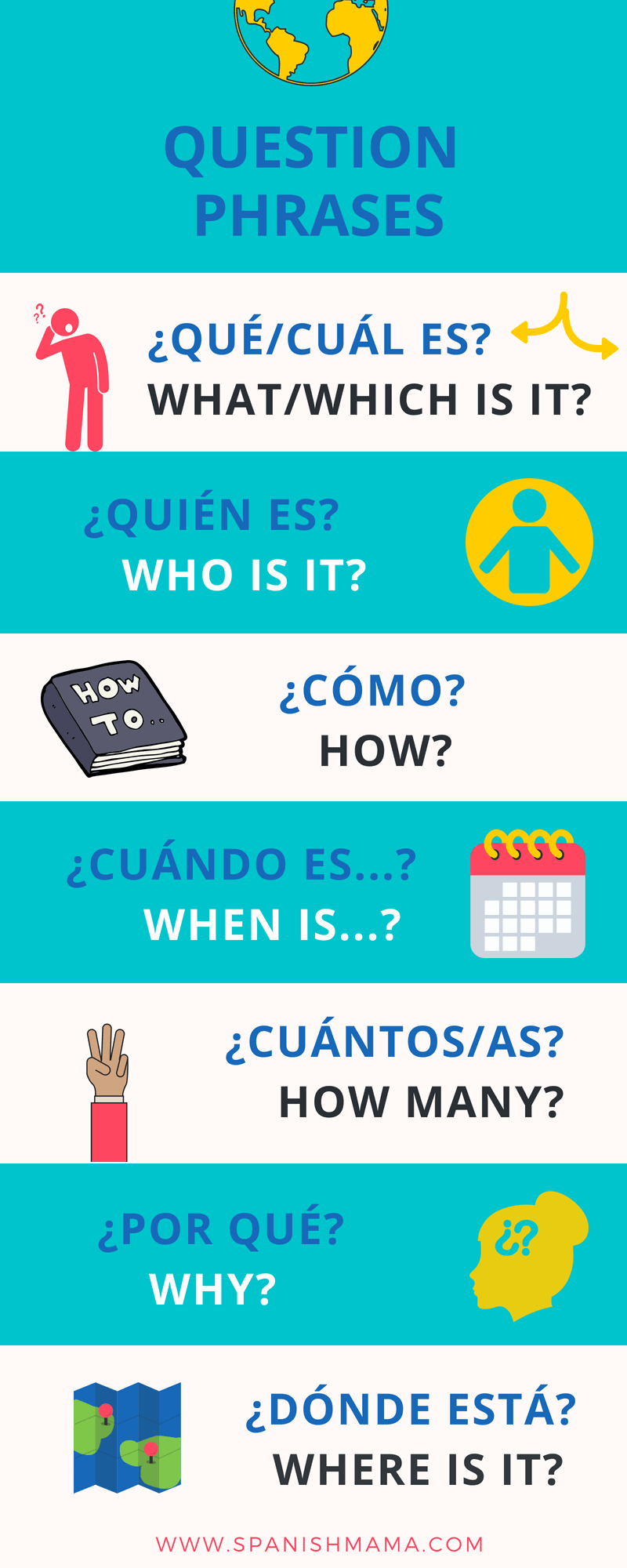
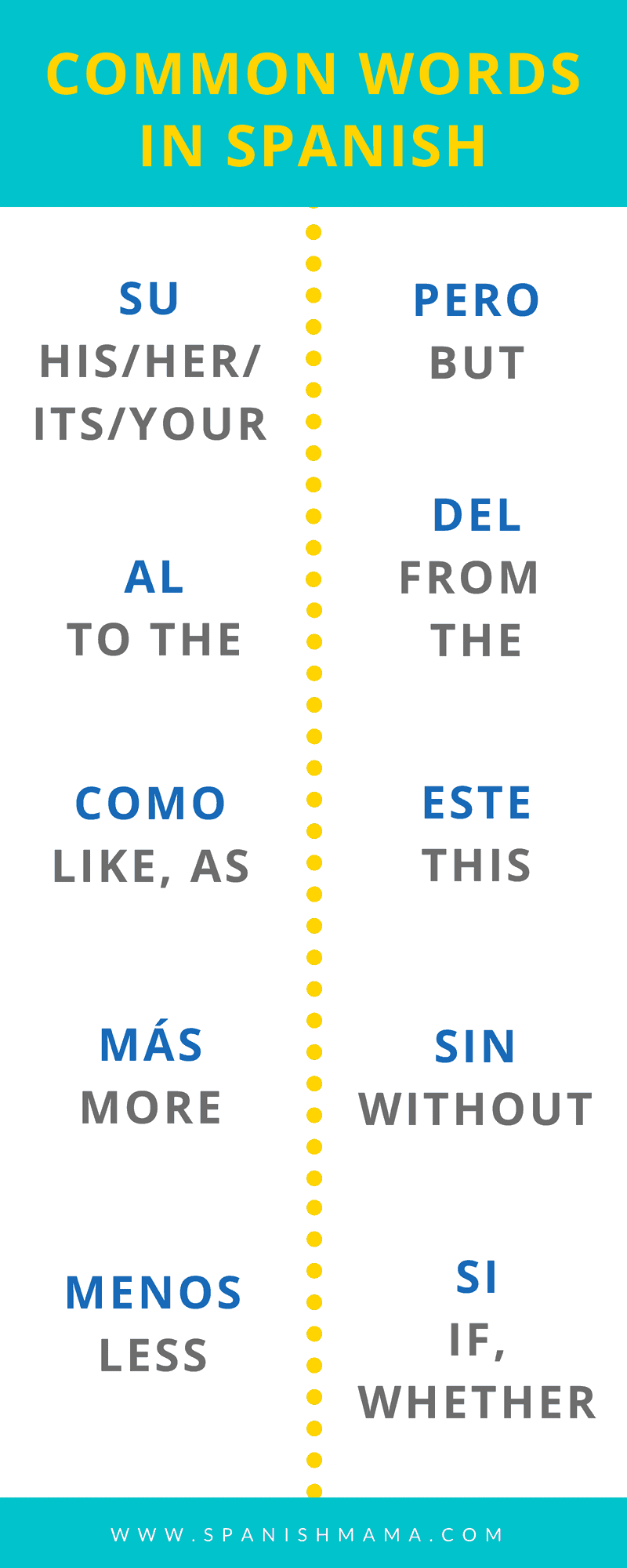
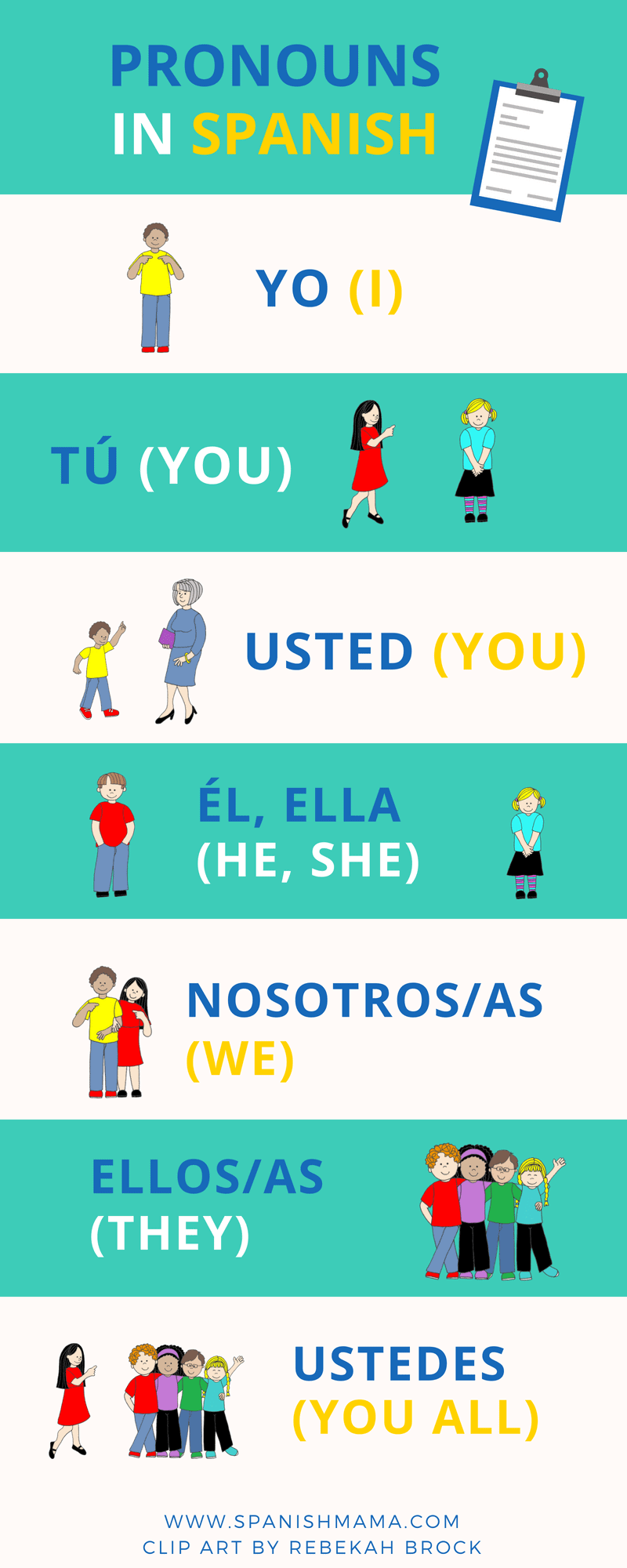
COMMON SPANISH PHRASES FOR PARENTS
If you would like to work some Spanish into daily routines and family life, here are some core phrases that you can post and begin to use right away. If you use phrases in context and attached to an action (Come here!), you’ll be amazed how much they stick!
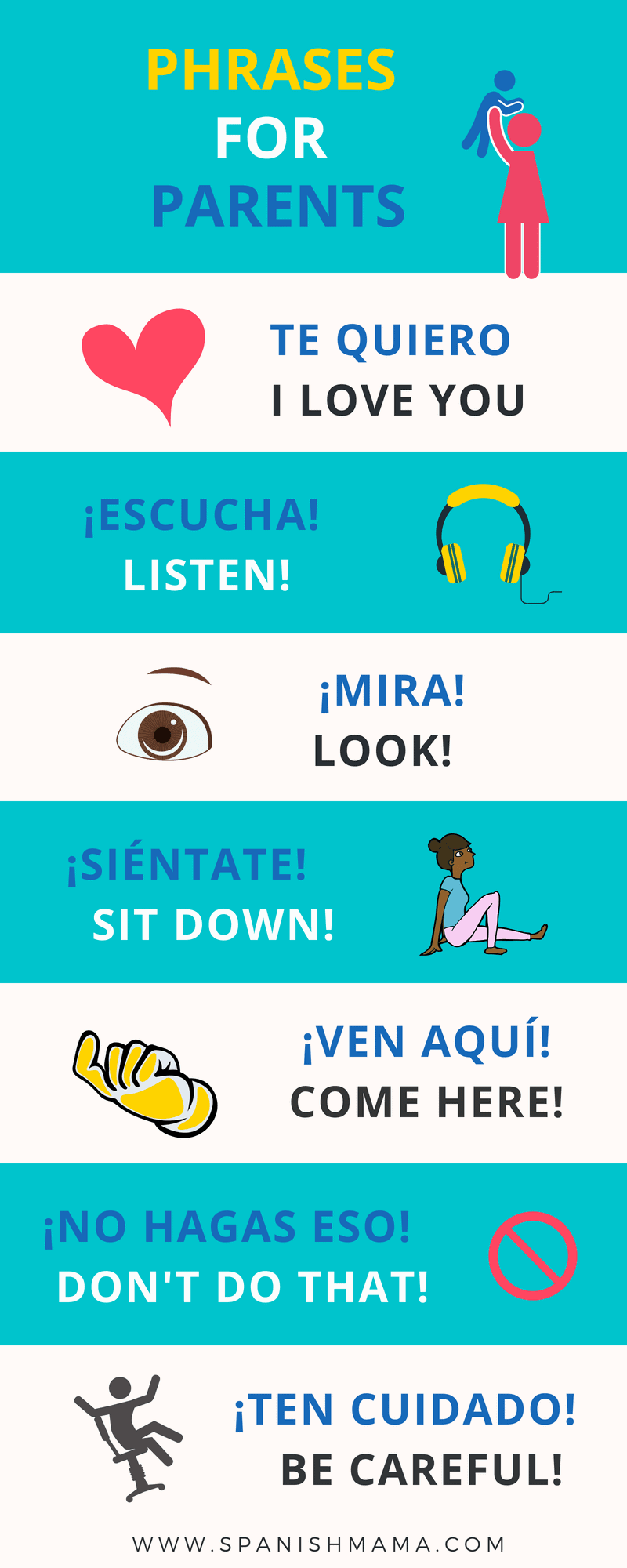
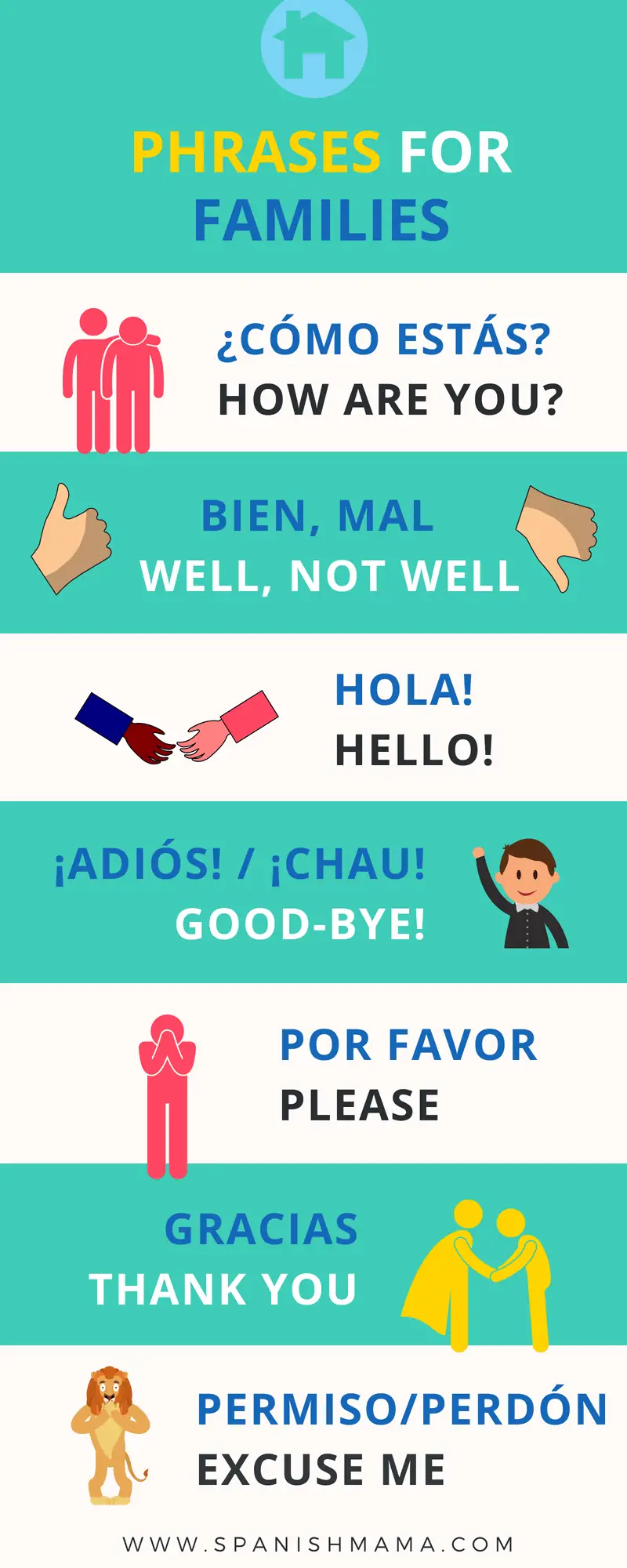
MORE LISTS
If you want more phrases, here are some more! I’m also sharing some Spanish-only lists, if that’s more helpful to you.
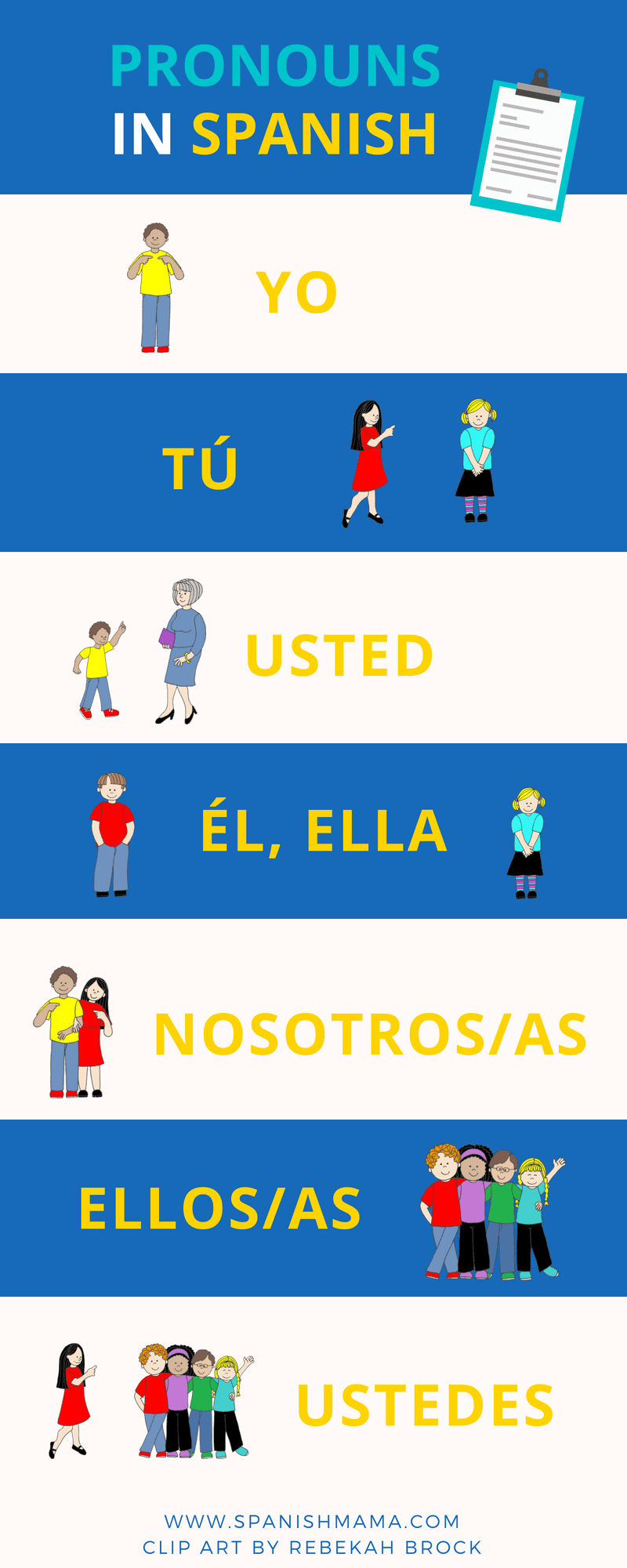
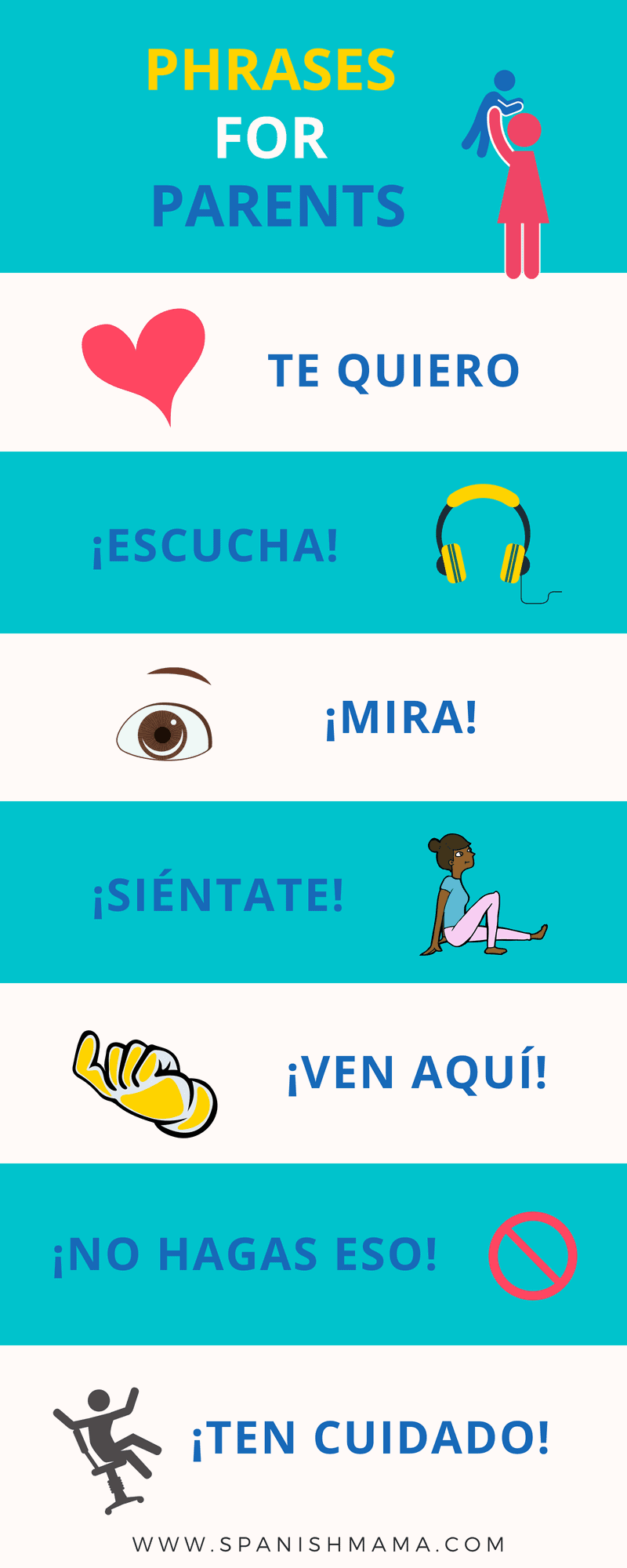
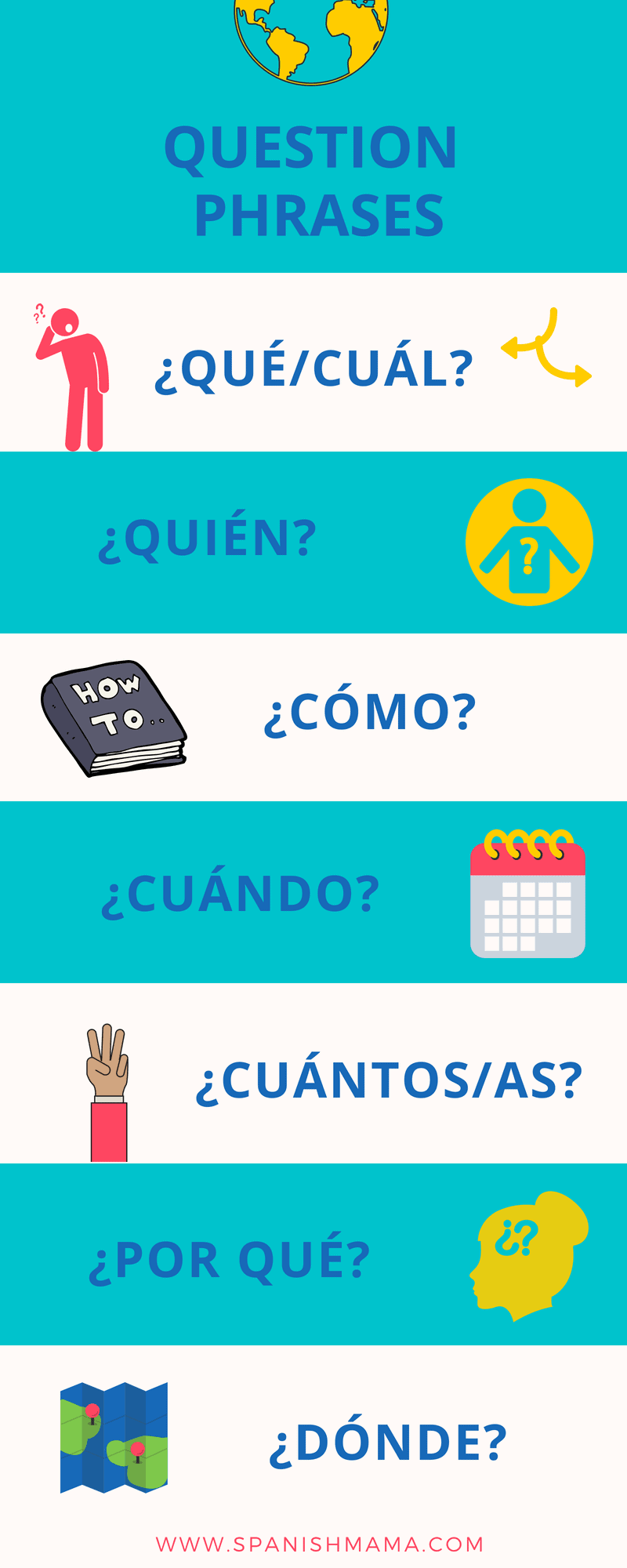
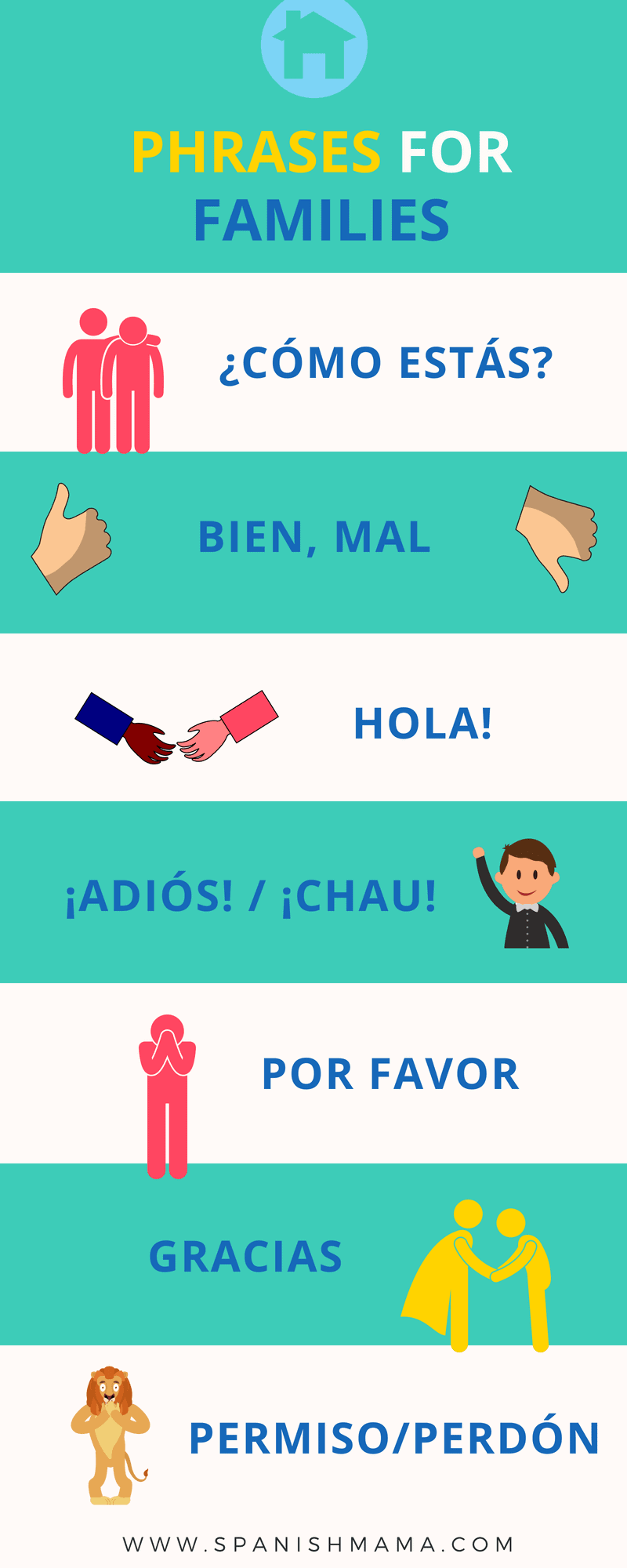
Grab these most common Spanish verbs and phrases as a download by clicking:
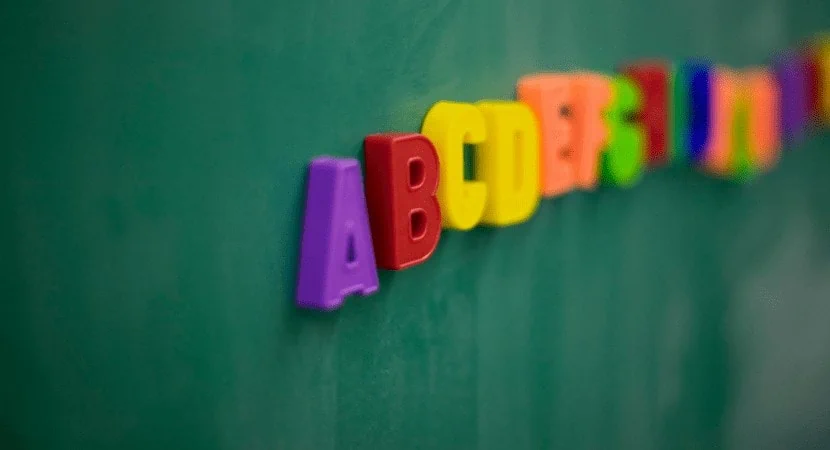










Me encanta leer su blog y integrar algunas de las actividades en mis lecciones.
También espero q ya se a acomodado a su nuevo lugar.
Muchísimas gracias! 🙂
Spanish Mama, ¿Qué programa has usado para hacer estos posters tan bonitos? Estoy intentando crear mis propios posters y cosas para decorar la clase con vocabulario específico de mis niveles, pero no he encontrado nada que me funcione bien todavía…soy una persona muy visual y no quiero poner cualquier cosa en las paredes.
Yo uso Canva y me encanta 😉
Is there a way I can print the posters? Thanks!
Could I get the Spanish alphabet with pronunciation, please?
Me encanta todo tu trabajo.